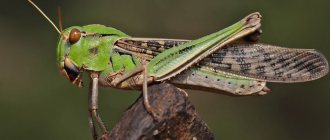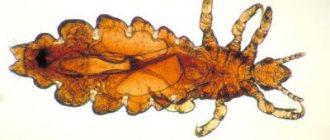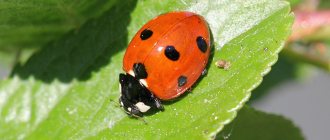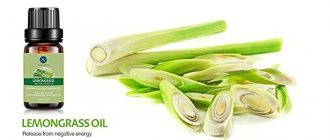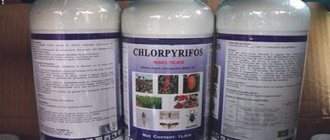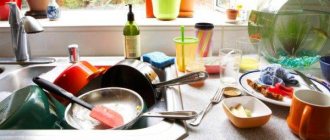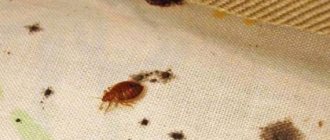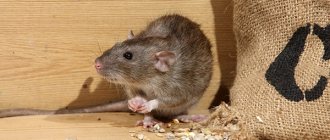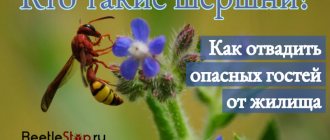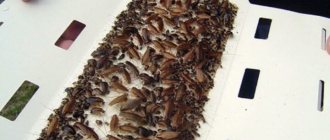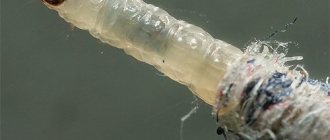Fighting lice, what are they afraid of? What is pediculosis and why does infection occur? What products can repel insects? What methods can be used to combat parasites? Which methods will not bring a positive result. The most common myths about lice. Proper treatment and preventive actions.
Quite often, people faced with head lice turn to traditional methods for help, especially when children are infected with parasites. This is due to the fact that there is an opinion that folk remedies are absolutely safe and are not inferior in effectiveness to specialized ones.
But this is not entirely true; in most cases, such treatment does not bring positive results, you have to look for new recipes or carry out numerous treatments. Let's take a closer look at why this happens, what lice are really afraid of, and what methods of control are not effective at all.
What do they love and what are they afraid of?
There are quite a lot of myths regarding why lice appear, what are the causes of lice, what do they eat, what kind of lifestyle do they lead, and what means can be used to defeat them.
Let's try to understand all these points. So, head lice parasitize the human body, feed on blood, reproduce and lay offspring without leaving the host. Thanks to their piercing-sucking mouthparts, they easily pierce the skin and become saturated with blood, while the person experiences severe itching. Itching is a reaction to the insect's saliva. They need regular nutrition; without food, an insect cannot live more than a day.
Infection occurs only through contact; the idea that these parasites can fly or jump is erroneous. They don't have wings, so they don't have the ability to fly. The structure of the paws does not allow for jumping, but they are perfectly developed to stay on the hair.
They can crawl from a host to a new host when their heads touch. Also, if you try on the hat of an infected person, use his comb or other personal items where parasites may be located. Let's consider several opinions on what you can use to get rid of lice.
Shampoo
Some claim that if you are infected with lice, you can cure it with regular cosmetic shampoo; just wash your hair as often as possible and the insects will disappear.
This is a misconception; shampoo does not affect parasites in any way; the only thing that can be achieved is to cleanse the skin so that it is easier for lice to bite through and feed on them.
Pediculosis does not depend at all on whether a person is clean or not; lice do not get dirt, so cleanliness will not affect them in any way. The fact is that people who do not take care of personal hygiene often do not fight lice, which is why there is an opinion that they are more susceptible to infection, which is completely wrong.
Water
Parasites cannot be washed off with water and they also will not die under water, of course, if they are not placed under water for a long time, which is basically unrealistic, given that they parasitize on the head.
When washing your hair, swimming in a pool or any body of water, they cling tightly to the hairs with their paws and are not washed off with water. Submerging under water for a while will also not give any result, since the water does not penetrate the respiratory tract. Regarding nits, water also does not affect them in any way, since they are reliably protected by a strong shell.
Without power
This is the true truth, they really need regular nutrition, for this reason they are always on the human body and do not leave it. They cannot live more than a day without food.
Based on this, we can conclude that infection is possible through contact with a carrier, since they simply cannot be outside the human body. Of course, there are cases when infection occurs through personal items and hats, but this happens much less frequently.
Vinegar
Many of us have heard that you can fight parasites with vinegar. This substance is not capable of destroying insects and for pediculosis, as the main remedy it is powerless. Vinegar can really help, but only because the nits will be easier to detach from the hair and the combing procedure will be easier.
Hot air
There is an opinion that you can deal with lice using hot air, for example, by visiting a sauna or using a hairdryer. In fact, these parasites love warmth very much and often accumulate on the back of the head or behind the ears; these areas are warmest and a slight increase in temperature will not harm them in any way.
Very high temperatures can really kill them, but this is impossible due to the fact that they are on a person and they will also have a negative effect on him.
Use of specialized drugs and folk remedies
The fight against pediculosis has been going on for many years, and during this time a lot of different remedies have been found, some show a high level of effectiveness, and some cannot please us with good results.
For adult individuals, it can be treated using specialized means, and often one treatment is sufficient. With nits the situation is more complicated; they are protected by a shell through which poisons do not penetrate. It is necessary to resort to the combing procedure and repeat the treatment after some time, when young sexually mature individuals emerge from the nits.
Pharmacy drugs
Now in the pharmacy you can see a huge assortment of all kinds of anti-pediculosis drugs. They differ in release form, composition, and mechanism of action. When choosing, you need to take into account age categories (at what age can you use it), contraindications.
Be sure to study the instructions for use and do not change the dosage or regimen. You also need to remember that if used incorrectly and if safety precautions are ignored, it can cause harm to health.
The preparations use different active components and the concentration is calculated in such a way as to destroy parasites, but not harm human health. If you follow the instructions, you can quickly get rid of lice. Everyone can choose the most suitable form of release; let’s consider them in more detail.
Shampoo
This release form is suitable for use by young children. The treatment procedure is similar to regular hair washing, which is quite convenient and easy, and differs from, for example, using an ointment or emulsion.
Often one treatment is enough to get rid of all adults, but in severe forms it may be necessary to carry out several. After completely getting rid of lice, combing is carried out, after 5-7 days the procedure is repeated to get rid of young parasites that may appear from the nits.
Spray, aerosol
Refers to drugs that provide high efficiency. It is enough to apply to the hair and scalp, leave for a certain amount of time indicated in the instructions and rinse. The spray makes it very easy to apply, especially when your hair is long.
Creams and ointments
An equally effective form of release, but it has some peculiarities. They are much more difficult to apply than, for example, a spray, so they are often chosen for treating short hair. It should also be said about the greasy structure, which is quite difficult to wash off.
Ways to combat pediculosis
If a person does become infected with parasites, it is necessary to get rid of lice as soon as possible. There are a large number of different means and methods for this. There are several types of effects on lice and nits:
- chemical using drugs containing toxic toxins and insecticides;
- temperature effects on lice using low and high temperatures;
- mechanical by combing hair out with special combs and combs;
- repelling parasites with strong-smelling substances containing natural ingredients and extracts.
Traditional methods
As mentioned earlier, many people prefer folk remedies. Some really help in the fight against lice and show good results. Let's look at them in more detail.
Vinegar
First of all, you need to remember that a vinegar solution is prepared for processing; use in its pure form is prohibited. So, take ordinary vinegar 9% and dilute it in a 1:2 ratio with ordinary water. It is required to obtain a 5% solution.
Processing is carried out as follows:
- Apply to hair and distribute evenly throughout the strands.
- The head is covered with a plastic bag or cling film.
- Aged for half an hour, maximum 40 minutes.
- Wash off with shampoo.
- Combing is in progress.
Regarding the benefits, a simple and affordable remedy helps in the fight against parasites. There are also disadvantages: if the concentration is higher than permissible, you can get a burn.
Kerosene
This substance is very aggressive and its use in its pure form is strictly prohibited. There are quite a lot of recipes for products containing kerosene and you can choose the most suitable one.
The advantages include low price and high efficiency, but you should always remember the disadvantages, which include the danger of use, possible intoxication and burns. Cannot be used by children and elderly people.
Dust soap
A very popular remedy that works well against parasites. It must be used with great caution, the fact is that it contains poisons that can accumulate in the human body and are not removed from it on their own.
It is worth saying that in many countries its use is prohibited. The advantages include high efficiency and low price. The disadvantages include the presence of a dangerous poison in the composition. Cannot be used by children.
Hair helmet
Some argue that you can deal with head lice using hair dye; this method, as you can understand, is only suitable for women. It can really help, but only at the initial stage, as soon as infection has occurred.
Hydrogen peroxide
A solution is prepared from it, which is used to treat skin and hair. It can show a high result, but it only acts on adults, the nits remain intact, so you will need to comb out and repeat the procedure. Instead of peroxide, alcohol solutions are also used, but remember that these substances are not used in their pure form, as they will harm your health.
These products are affordable, show good results, have a low price and are easy to use. Disadvantages include the risk of burns if the solution is prepared incorrectly. It is also worth noting that it is ineffective against nits.
Mechanical methods
Treatment of pediculosis consists not only of a treatment procedure, it must be carried out comprehensively, also including combing, disinfection of the apartment, processing of things and clothes.
Regardless of which remedy was chosen, from traditional medicine or pharmaceutical preparations, combing after treatment is mandatory. This allows you to comb out dead adults, lice that are still alive and, most importantly, nits.
There are several types of combs on sale:
- Classical. It is a regular plastic comb with fine teeth.
- Metal. This comb allows you to comb out with maximum efficiency. Special notches on the teeth allow hair to pass through and nits to be retained.
- Electric. In the fight against lice, it can be useful if the hair is short, but it is ineffective against nits.
Combing must be done daily for several days until the parasites are completely eliminated.
External factors
One of the most important factors for normal life and reproduction is temperature. Favorable conditions are considered to be an air temperature in the range of 25-35°; parasites feed normally and multiply very quickly. For the nit to mature at this temperature, only 5-7 days are enough and a young individual appears.
Temperatures above 40° and below 10° are considered unfavorable conditions; they become very slow and cannot feed and reproduce normally. If the temperature drops to 0°, lice can hibernate, which lasts up to 60 days.
If the temperature rises above 50° they will die. Using hot air with a hairdryer is not able to destroy parasites, but it can make them weak and slow, which will make combing out much easier.
Smells
Lice smell very well and some cannot tolerate it, so folk recipes often use aromatic herbs, such as wormwood, mint, tansy, calendula and others. Essential oils of tea tree, wormwood, lavender, geranium, and cypress have an unpleasant aroma for parasites.
Essential oils can be used in head treatments and in disinfection solutions. They will not be able to cope with a severe infection, but at the initial stage they are effective. They can also be used for preventive purposes, applied to the back of the head and behind the ears.
Substances
Substances that are fatal to lice and nits are included in specialized preparations intended for the treatment of lice. These substances include permethrin, dimethicone, malathion, phenothrin.
Each substance has its own mechanism of action. Some affect the nervous system causing paralysis and death, others block the respiratory tract, and others corrode the chitin coating.
Even the most effective and powerful product cannot guarantee complete removal of lice and nits; for this reason, it is recommended to comb it out after treatment. It is also recommended to carry out repeated treatment in case there are live nits left and young individuals emerge from them, in order to destroy them and prevent them from reproducing.
What repels lice from humans?
There are many products available in the fight against lice, which not only allow for treatment, but can also be used as a preventive measure for primary or re-infestation. The most effective are chemical and mechanical methods. In the first case, the fight against parasites is carried out through the application of special agents that negatively affect the vital activity of insects.
REFERENCE! To prevent infection, the scalp and hair must be treated with special oils, ethers and shampoos, which parasites do not like due to their smell and disrupt the adhesion of nits to the surface.
Myths
As mentioned earlier, there are quite a lot of myths about lice, then we will look at this issue in more detail:
- The cause of lice is uncleanliness. A person’s cleanliness in no way guarantees protection from lice, and absolutely anyone can become infected, regardless of compliance with hygiene rules, status, gender, or age.
- Lice are carriers of HIV infection. If the insect feeds on infected blood, when it enters the gastrointestinal tract, the virus will be destroyed under the influence of enzymes, so human infection is excluded.
- They prefer to settle on people who have blood type 4. Blood type does not matter at all; lice absolutely do not care what kind of blood they feed on.
- You can get infected from animals. These insects do not parasitize animals; infection is excluded.
- They can jump long distances, covering up to 5 meters in a jump. The structure of the paws and body excludes the possibility of jumping; they can only crawl; in 1 minute they cover about 20 cm. Only fleas jump.
- Lice can penetrate into the middle of the skin. This is impossible; when feeding, the parasite can only bite through the skin and penetrate into the middle with its proboscis; the body itself is much larger than the hole.
- Pediculosis does not cause any complications. Complications can occur if a person has a weak immune system or has allergic reactions.
- Bite sites take a long time to heal and may fester. If infection gets into open wounds, relapsing and typhus may develop, in addition, dermatitis and eczema may appear at the scratching sites.
- Drug addicts and alcoholics are not susceptible to infection, since their blood is not suitable for feeding parasites. Human blood is constantly renewed and cleansed; these findings have absolutely nothing to do with lice.
- In addition to blood, they feed on skin particles and dandruff. Their diet consists exclusively of human blood. Dandruff and dead skin particles only interfere with their nutrition.
Pediculosis is a disease that requires specialized medical care. You should not believe rumors and all kinds of myths.
Who are lice?
Lice are small bugs, up to 0.5 mm , that live in people's hair, such as on the scalp, eyelashes, eyebrows and pubic area. They are an insect with 6 legs and a gray or light brown body. Lice are very fast, but they cannot jump, like fleas.
The insect feeds on human blood through a special flagellum , so it chooses habitats with the thinnest skin to make it easier to suck the blood.
A fertilized louse lays thousands of nits during its 40-day life, which take approximately 14 days . Nits are attached at the roots of the hair and have a characteristic transparent white color.
Treatment of pediculosis
First of all, you need to understand that if, for example, a child in the family becomes infected, treatment should be carried out not only for him, but also for all family members. The likelihood of infection between family members is very high, and in order to prevent repeated infections and the proliferation of parasites, you should protect yourself.
It is necessary to select drugs according to age categories and taking into account contraindications. There are anti-pediculosis medications that are used from the age of 3 or 5 years, so they are suitable for all family members, unless, of course, there are contraindications. If you have illnesses, it is better to consult a doctor who will help you choose a medicine according to your individual indications.
Treatment of pediculosis should be comprehensive. After treatment, be sure to comb out. Remember that even the most effective drug in most cases does not destroy all nits, since they are protected by a shell.
Combing will help get rid of the remaining living individuals. It is also recommended to repeat the procedure after 5-7 days (you should study the instructions, the time interval may vary). This will help prevent re-infection in cases where live nits remain and sexually mature young individuals emerge from them.
In addition to processing and combing, you should take care of disinfecting things and premises. As a rule, lice cannot be outside the human body, because without food they die. But some individuals can still get on bed linen, bedspreads, clothes, combs, so all this must be treated.
These insects multiply very quickly and if you give them a little time, you will have to fight huge colonies of parasites. Severe stages of pediculosis are much more difficult to treat and require a lot of effort and time. Therefore, as soon as an infection is detected, you should immediately begin effective treatment and not waste time on experiments with the hope that they will simply disappear.
Anti-Bit and Pedilin shampoos, which contain powerful substances that destroy blood suckers, show high effectiveness. They are very simple and easy to use, just apply to damp hair, rub well into the skin and distribute through the hair, let sit and rinse.
Also very popular is Nittifor lotion, which has a prolonged effect of up to 3 weeks. Aerosol Para Plus is easy to apply thanks to the sprayer, convenient when treating long strands; one procedure is enough to completely destroy parasites. Nyx cream has proven its effectiveness, but this form of release is suitable for those with short hair; for long hair it is quite difficult to apply and rinse off.
Most drugs are contraindicated for pregnant and breastfeeding women, so you should consult a doctor. Treatment for children under 2 years of age is carried out under the supervision of a doctor.
Review of drugs for protection against lice in children
How else can you protect your child from parasites? Today, manufacturers produce various series of drugs for nits and lice.
Among them, shampoos of the following brands are recommended for use even in the youngest patients:
- NOC
- Knicks
- Biosim
- Veda.
They can be used both to combat ectoparasites and to avoid infection if lice were detected in the kindergarten that the child attends. Treatment consists of soaping, leaving for 20 minutes and rinsing with plenty of running water.
Among the anti-lice shampoos, NOC, Nix, Biosim, Veda and Veda-2 are most suitable for children.
But remember that the use of these drugs gives positive results only with regular use and in combination with other measures, including limiting contact with sick people.
Sprays are considered the most effective among antiparasitic drugs. Some of them have no restrictions on their use and can be used both in case of infection and to avoid it.
We looked at various ways to protect ourselves from a disease, the spread of which until recently was considered possible only among people who do not have a fixed place of residence and do not observe basic rules of personal hygiene. Which one to choose is up to you. But remember that they are all good when taken as an integrated approach and should be used regularly.
Sprays are considered the most effective drug. They can also be used to process clothes
Is it worth using shampoos if there are no lice? There is no clear answer to this question. How many people, so many opinions. In addition, among these drugs there are both completely safe for humans and toxic ones that can cause allergic reactions. Therefore, when deciding for yourself whether to use them or not, check which category the product you have chosen belongs to. If it is based on natural ingredients, then it will not cause harm and can be used as a regular detergent.
FAQ
A disease such as pediculosis raises quite a lot of questions, let’s try to answer some of them.
How long do parasites live outside the human body?
This question arises due to the possibility of re-infection. When a person is infected with lice, an individual can certainly end up on the bed, carpet, or clothes.
Therefore, it is quite logical to understand whether after some time it can get on a person again and lice will appear again. Should absolutely all things be processed and put in sterile order?
If a louse leaves a person's body, it can live for a maximum of 72 hours. There is no need to disinfect everything around, and given the size of the insect, this will be impossible.
As a rule, they can only get on objects from the head, which means that they can be located, for example, on a comb, pillow, or headdress. Things that come into direct contact with the head are definitely better treated.
Why do anti-pediculosis drugs need to be used strictly according to the scheme, and also rinse the hair with a vinegar solution after treatment?
The substances used in the preparations are toxic; they are presented in safe concentrations for health. Time intervals allow you to use the drug without harm to health, so time limits must be observed.
Using a vinegar solution greatly simplifies the combing procedure. The fact is that when a louse lays nits, it attaches them to the hair with an adhesive substance, which securely fastens it. Vinegar allows you to break down this substance, which makes it easier to detach from the hair.
Why is it necessary to repeat the processing?
Almost all drugs should be used twice. This is not due to the fact that they are not effective or not promising. Often the first procedure removes all the adults and most of the nits, some nits remain on the hair and there is a possibility that some may remain alive.
Since it takes about 5-7 days for nits to mature, after this period a second procedure is carried out, which destroys the young individuals and prevents their reproduction.
Does the use of anti-pediculosis drugs worsen the condition of hair and skin?
This effect can really be expected. It is recommended to use restorative balms after treatment. In this case, there will be useful infusions of chamomile and nettle.
Is it possible to cure lice using a solarium and ultraviolet light?
Ultraviolet light copes well with microbes, but is powerless against lice. The solarium does not affect insects in any way.
Can pets get infected?
Animals are not afraid of human lice; they cannot parasitize on a pet’s body, just as fleas are not afraid of people.
Will a curling iron and hair dryer help get rid of parasites? Are they afraid of high temperatures?
The direct influence of these devices using high temperature will indeed kill them, but lice cannot be cured in this way; there is a high probability that the person will receive skin burns and severely damage the hair. Remember that nits are found on the hair close to the skin. But ironing clothes and bed linen will be very effective.
Can anti-pediculosis drugs be used for prevention purposes?
It is strictly not recommended to use the products if the person is not infected. All medications are toxic and it is impossible to give the body a load in the form of toxic substances unless necessary. There are no specialized means for prevention, but measures can be taken to reduce the likelihood of infection.
Substances
Chemicals that have an adverse effect on lice are included in pharmaceutical preparations, these include:
- permethrin;
- malathion;
- phenothrin;
- dimethicone;
All of them have different effects on insects: some paralyze the nervous system, others corrode the chitinous shell, others have a suffocating effect, but ultimately lead to the rapid death of adult individuals.
The most effective and efficient way to remove lice is an integrated approach. When treating pediculosis, it is necessary not only to treat the head with a special product, but also to comb out the nits mechanically every day, using a comb.
For preventive purposes, in the summer, you should constantly inspect your head for lice and nits, since absolutely anyone can become infected with lice, regardless of their cleanliness.
Preventive measures for children
Absolutely anyone can experience lice infestation, regardless of cleanliness, blood type, status and age. As statistics show, children are most often infected, but there are reasons for this.
The fact is that children have more contact with each other than others, during walks, during games, when visiting kindergartens, schools, and camps. Since parasites are transmitted through contact, the spread among children accounts for the largest percentage.
In addition, children very often use each other’s personal items, do their hair with the same comb, try on hats, etc. You cannot completely protect your child, but you can try to reduce the likelihood of infection.
It is necessary to explain to the child why it is better to maintain a minimum distance during games, that you cannot take other people’s things and give them your own, girls must braid their hair, ponytails, and do their hair so that there is no loose hair in public places.
Are lice and nits afraid of water? Can they breathe underwater?
The main route of transmission of lice is contact, i.e. transmission of the pathogen occurs through touching, hugging, sharing contaminated objects, including swimming together in a pool, visiting a bathhouse with a sick person. Disease carriers can spend two days under water at + 15 – 17° without harm to themselves, so they are not afraid of water.
General preventive measures
Regardless of age, you should always remember about preventive measures that will help minimize the occurrence of head lice. Remember that pubic and linen lice are also transmitted through contact and personal belongings. Avoid close contact with strangers. In public transport, in queues, elevators and other places, maintain a minimum distance from each other.
Check your hair for parasites as often as possible. Of course, it will be quite difficult for the head to detect one individual, but it is possible. A disease detected in time is easier to treat and fighting a minor infection is much easier than dealing with huge colonies.
Maintain hygiene and cleanliness in the room. It is much easier to detect parasites if the scalp is clean, also regarding the main symptom of lice - itching, which can appear due to dandruff or dirt, and when lice appear, it will be difficult to distinguish the nature of the itching. You need to regularly change your bed linen, wash dirty clothes, and wash your combs.
Keep an eye on your personal belongings so that no one takes them to use, and also do not take other people’s things. When visiting places where there are common changing rooms, put your things in bags and tie them up, do not use shared towels, and do not share your own.
If your work involves communicating with a large number of people, you should be as careful as possible; you can use the following protective measures:
- Use essential oils that have a strong, repellent aroma. Lavender tincture also helps well.
- Combing your hair with a fine-tooth comb as often as possible will help detect and get rid of insects at an early stage of infestation.
- Use preventive shampoos from time to time.
Why is it impossible to eradicate pediculosis?
The louse is a human ectoparasite that loves unsanitary conditions and crowds of people. The disease is widespread among the population of undeveloped countries and occurs in outbreaks throughout the world.
Dysfunctional families, people without a fixed place of residence, people leading a dissolute lifestyle are a source of infection. In such cells of society, the fight against pediculosis is not carried out at all, or it is done superficially. Lice continue to inhabit the planet, infect people, and annoy people with their existence.
On a note!
You can catch lice anywhere, through close contact with an infected person or his things. The opinion that lice love unsanitary conditions and choose dirty, unwashed heads is completely unfounded. Insects settle on a well-groomed head equally quickly and feel much more confident there.
Travelers, volunteers, children, and people who neglect basic personal safety rules are at risk.
Folk remedies for prevention
There are several folk recipes that will help prevent head lice. They are available, easy to use and, as a rule, safe for human health. The first thing to remember is that insects cannot tolerate strong odors, they try to leave the area where there is an unpleasant odor as soon as possible, so you can resort to the following measures:
- We make an infusion of lavender.
- Apply 1-2 drops to the back of the head and behind the ears.
The infusion can be replaced with essential oil, which is first diluted with water. Eucalyptus, geranium, bergamot, and tea tree oils have the same effect.
Remember that the use of essential oils has age restrictions. Children from 1 year old can use tea tree and lavender oil. Bergamot and eucalyptus can be used from 2 years of age, and geranium only from 5 years of age.
Smells
All animals and insects react negatively to sharp, specific aromas; lice are no exception . You can repel parasites from your hair using essential oils:
- Tea tree.
- Lavender.
- Cypress.
- Wormwood.
- Geraniums.
Parasites primarily inhabit the temporal and occipital parts of the head, so for preventive purposes it is recommended to apply essential oils behind the ears and on the back of the head.
At what temperature do lice die?
These parasitic insects tolerate conditions well that are no longer comfortable for humans, but are still quite tolerable to them. This range is from -5°C to +40°C, that is, 45°C. In such conditions, parasites are able to survive for several days.
But both a decrease in the indicated temperature and an increase in it, even short-term, have a detrimental effect on them. Lice become weak, cannot stay on the hairs and can be easily combed out with a fine comb. This dangerous level for insects ranges from -7 - 10°C to +42 - 44°C . At these values, parasites can survive for only a few hours.
And they have no chance at all if the temperature rises above +54°C or drops below -13°C. In such conditions, lice can live no more than 5 minutes.
The temperature spread in this case is about 65°C. But these indicators are still conditional, since air humidity makes its own adjustments to them. If it increases, then the temperature range at which lice feel normal is reduced. If the humidity decreases, then the optimal range approximately corresponds to the above values.
Causes and main symptoms of lice
To protect yourself from lice infection, you need to know how and where the parasites get to our children. Information on this issue is available in every school and kindergarten.
The main sources of infection are:
- Children from disadvantaged families
- Hats
- Combs, combs
- Bed dress
- Water in the school swimming pool and small standing ponds.
But not every child who joins a children’s group for the first time strictly observes the rules of personal hygiene and knows how to prevent lice. Therefore, in most cases, it is from kindergarten or school that the disease is introduced.
The first symptoms of infection are the appearance of itching in the occipital and temporal regions. But as the population of parasites grows, the tooth becomes stronger, scratching of the skin appears, which over time fester, forming boils.
The presence of nits in the hair - they can be seen with the naked eye upon detailed examination
If you look closely at the patient's hair, you can see nits on them. They are usually found at a height of up to 1 cm from the roots and look like dandruff. However, unlike the latter, they cannot be shaken off, since the larva is firmly glued to the hair using a special secretion.
In the photo there is a louse in the hair on your head; you can notice the first signs of the disease only after 2-3 weeks.
And although the prevention of head lice in kindergartens is usually taken quite seriously, cases of infection there are quite common. And, in order to protect themselves from the appearance of insects, parents should carefully examine the child’s head every day and wash things brought from the childcare center in hot water.
Is it possible to get lice without human contact?
The lifespan of a louse is relatively short. If the parasite is not poisoned and is caught on the hair, then its life cycle is forty days. It is worth noting that the lice is an exclusively parasitic insect that requires a permanent human host.
We suggest you read: How to properly treat an apartment with delcide
The lifespan of a louse without a person depends on how long it can survive without food.
The lifespan of an adult louse is thirty days. It is during this time that the female lays approximately ninety eggs. After the incubation period (7–10 days) the nit hatches. Over the next ten days it turns into an adult. Then the cycle repeats again.
Outside the hairline, the parasite lives no more than four days, and then only provided that the ambient temperature is not lower than 23 degrees. When the air temperature approaches 30 C°, the parasitic individual lives outside the human head for only twenty-four hours. When the ambient temperature drops to 10 C°, a louse can live for 10–12 days, since the insect’s defense mechanisms turn on and it goes into hibernation. At what temperature lice and nits die, you will find on our website.
Head parasites are insects that are characterized by a constant feeling of hunger. She eats four times a day.
As for nits (lice eggs), in this case the situation is different. A nit, enclosed in a dense shell, can remain alive without a person for 3-4 days and hatch only when favorable conditions for survival appear.
The problem of lice is quite common, so many people are concerned about the question of whether it is possible to become infected with lice without human contact?
The answer to this exciting question is yes. Let's consider possible routes of infection:
- Through body items, if they were worn before you by a person infected with lice.
- Through the use of combs and other styling items (this is especially common in hairdressing salons).
- Through scarves and hats previously worn by a person with lice.
- Through the use of bed linen in trains and hotels.
- Swimming in a river (the parasite lives in fresh water for up to two days).
- Classes in the pool (if a person with head lice swam there before you).
- Operation of common items in a kindergarten, camp or school.
Regardless of the habitat, under favorable conditions (air temperature, humidity), the development of nits ends with the appearance of a parasite larva.
How to fight head lice with vinegar
This is one of the most affordable methods of getting rid of lice. To treat the head, use apple or table vinegar. They must be diluted with water in a ratio of 1:2 to avoid the risk of scalp burns.
The lice removal procedure consists of the following steps:
- • prepare a vinegar solution and test it on a person’s wrist to eliminate the risk of an allergic reaction;
- • apply the solution to the head and along the entire length of the hair;
- • cover the head with plastic wrap and wait at least an hour;
- • use a fine-toothed comb to thoroughly comb the hair strand by strand in order to remove lice along with nits.
- • wash your hair with regular shampoo.
The procedure must be repeated after 2-3 days, since single eggs could remain on the hair, from which young individuals will hatch. In case of severe infection, the procedure is repeated one or two weeks later.
